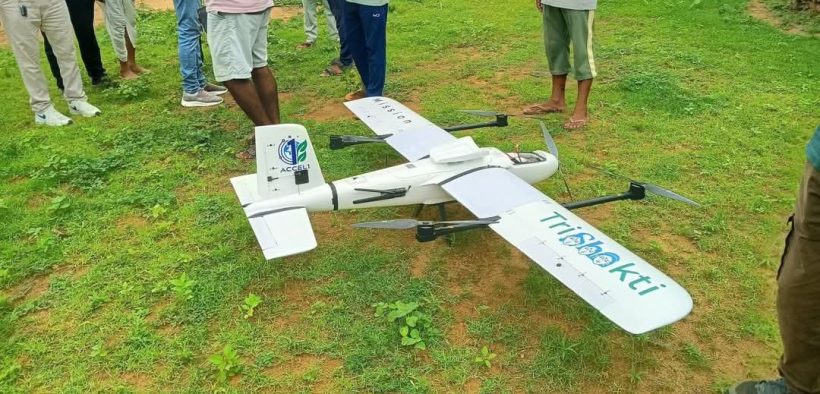Jaipur made history today, August 12, 2025, as India’s first drone- and AI-powered artificial rain experiment was launched near the 129-year-old Ramgarh Dam. The trial, conducted by the Rajasthan government in collaboration with tech company GenX AI, aims to generate rainfall through advanced cloud-seeding technology, offering a potential lifeline to drought-prone areas.
Advertisements

The event was inaugurated at 2 PM by Rajasthan Agriculture Minister Kirodi Lal Meena in the presence of experts, officials, and local villagers. Using 60 AI-controlled drones, the experiment will disperse cloud-seeding agents such as sodium chloride and silver iodide into moisture-laden clouds above the dam’s catchment area. These particles act as nuclei for water droplets to form, eventually triggering rainfall.
A Dam Waiting for Rain
Once a crucial water source for Jaipur, the Ramgarh Dam has been mostly dry for over two decades, leaving large parts of the city reliant on alternative, often scarce, supplies. Officials hope this innovative method will help refill the dam, rejuvenate agriculture, and restore biodiversity in surrounding areas.
Why Drones and AI?
Traditional cloud seeding involves aircraft or ground generators, but drones offer distinct advantages: they can be rapidly deployed, reach specific target zones, and work in challenging weather conditions. AI algorithms in the drones will analyze cloud density, moisture levels, and wind patterns in real-time to determine optimal seeding points—maximizing efficiency and minimizing waste.
Approvals and Preparations
The project has secured all necessary permissions from the Directorate General of Civil Aviation (DGCA), the Meteorological Department, the Agriculture Department, and local authorities. It was originally scheduled for 31 July 2025 but postponed due to heavy rain warnings at the time.
According to GenX AI’s project lead, this is the first time in India that drone-based cloud seeding is being conducted at such a scale with AI-driven targeting. “If successful, this could be a model for other drought-hit states,” he said.
Potential Benefits and Wider Impact
Beyond refilling the Ramgarh Dam, the trial’s success could pave the way for similar interventions in other water-stressed regions. The technology offers the possibility of climate-resilient agriculture, better urban water management, and ecological restoration.
Environmental experts, however, caution that cloud seeding is not a permanent solution to drought, as its effectiveness depends heavily on existing cloud conditions and regional weather patterns. Still, in combination with conservation measures and sustainable water use, it could be a powerful tool.
Looking Ahead
If rainfall occurs as planned, authorities may scale up the operation in the coming months. For Jaipur, and perhaps for India, this experiment marks not just a technological milestone but also a hopeful step towards combating one of the country’s most pressing environmental challenges—water scarcity.
